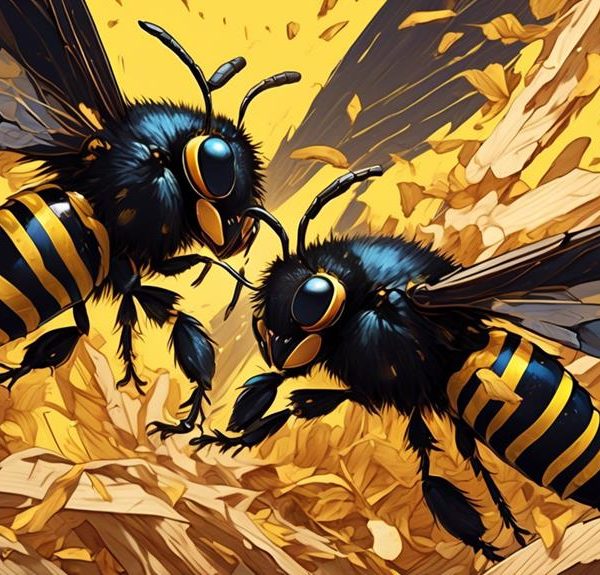Grappling with the truth about carpenter bees' impact on bumblebees? Dive into this complex interspecies dynamic to uncover surprising facts.
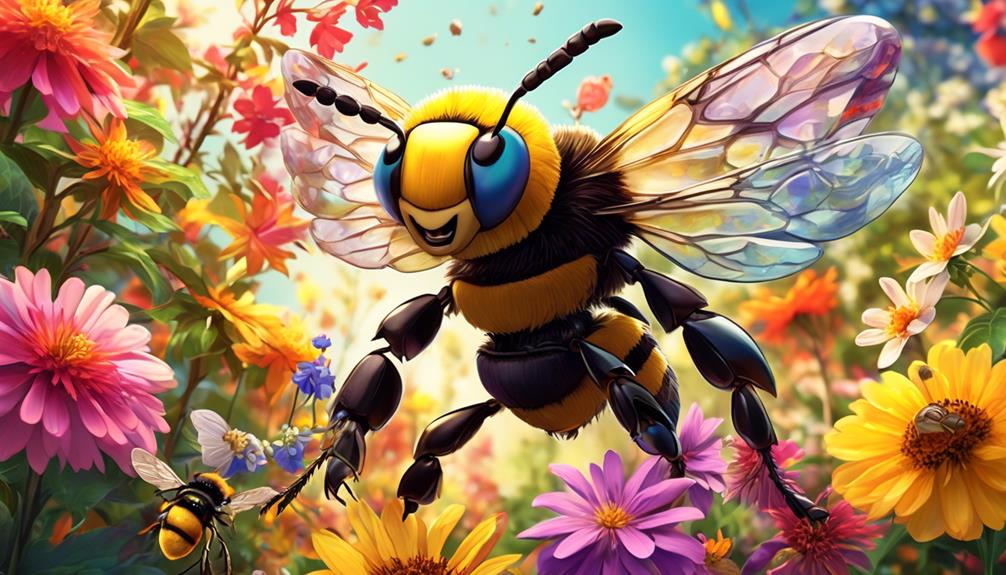
Do Carpenter Bees Kill Bumblebees
You've probably heard the theory: Carpenter bees, those burly, wood-boring insects, are decimating bumblebee populations. But how accurate is this claim? As you sift through the wealth of information on bee behavior, it's essential to distinguish fact from fiction.
Are carpenter bees the villains they're painted to be, or is there more to this interspecies dynamic? Join us as we unpack the intricacies of the bee world, and you may find your preconceptions buzzing off into the distance.
Key Takeaways
- Carpenter bees and bumblebees are generally not aggressive towards each other.
- While competition for resources and nesting spaces can occur, carpenter bees do not directly harm or attack bumblebees or destroy their hives.
- Carpenter bees prefer wood nests, while bumblebees prefer ground nests.
- Both carpenter bees and bumblebees are important pollinators and contribute significantly to pollination efforts and biodiversity.
Understanding Carpenter Bees
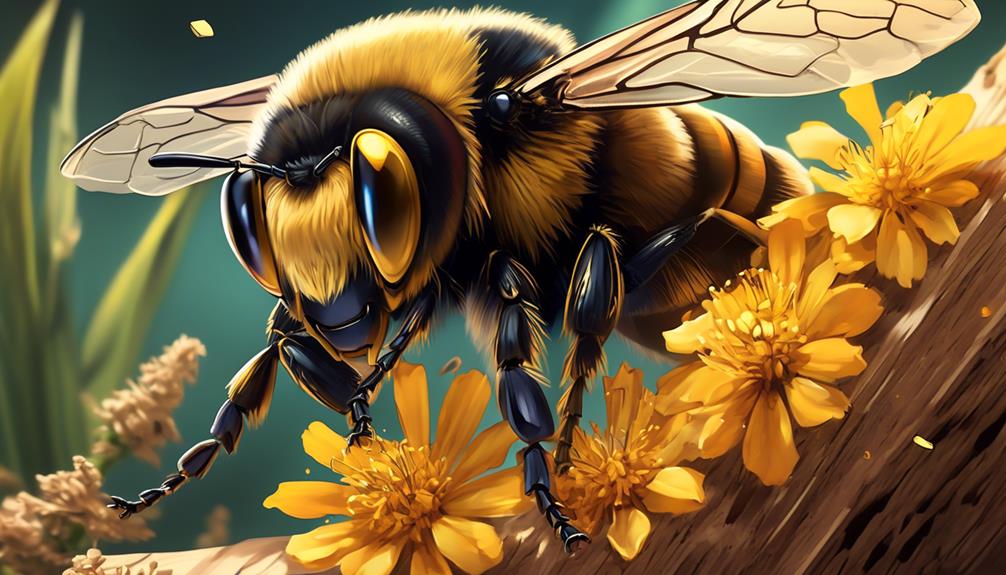
Often mistaken for their bumblebee cousins, carpenter bees are solitary insects that exhibit unique behaviors and characteristics you should be aware of. Unlike social bumblebees, they don't live in colonies or produce honey. Instead, they bore into wood to make nests, hence their name. You'll find them in your eaves, deck, or outdoor furniture, creating perfectly round holes that are about half an inch in diameter.
Carpenter bees are typically black and yellow, but they can also be metallic blue or green, depending on the species. You can tell a carpenter bee from a bumblebee by looking at their abdomen. Carpenter bees' abdomens are shiny, smooth, and devoid of hair, while bumblebees have a hairy abdomen with black and yellow bands.
Contrary to popular belief, carpenter bees aren't particularly aggressive. Male carpenter bees can't sting at all, and females only do so when provoked. They're vital pollinators, transferring pollen from male to female flowers, playing a crucial role in our ecosystem.
Understanding these aspects of carpenter bees can help you coexist peacefully with these industrious insects in your backyard.
Bumblebee Behavior and Characteristics
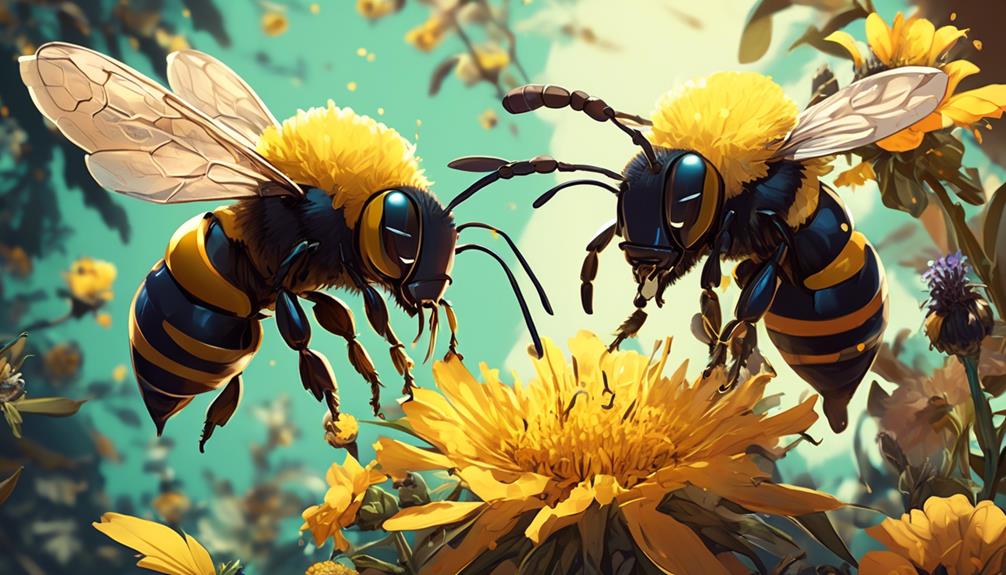
Bumblebees, unlike their carpenter bee counterparts, exhibit social behavior and certain characteristics that greatly benefit our ecosystem. You'd find them living in colonies, cooperating, and sharing tasks among themselves. They're known for their distinctive fuzzy bodies and loud buzzing sound, an auditory testament to their tireless work ethic.
Their primary role is pollination, a crucial process in the reproductive cycle of many plants. Your garden's blossoms and the variety of fruits you enjoy owe their existence to these hardworking creatures. Now, take a moment to contemplate the table below to truly grasp the importance of bumblebee behavior and characteristics:
Bumblebee Characteristics | Impact on Ecosystem |
|---|---|
Social behavior | Promotes cooperation and survival of the species |
Pollination | Enhances plant diversity and food production |
Fuzzy body | Facilitates pollen collection and transfer |
Buzzing sound | Warns predators and signals their presence |
Interactions Between Bee Species

While appreciating the unique characteristics and ecological significance of bumblebees, it's equally important to examine how they interact with other bee species, such as carpenter bees, within their shared habitats. You see, these species aren't typically aggressive towards each other. However, competition for resources and nesting spaces can lead to indirect conflict.
Carpenter bees, known as solitary bees, make their nests by tunneling into wood, while bumblebees, social insects, prefer to nest in the ground. This fundamental difference in nesting habits generally keeps them out of direct competition. Yet, in terms of food, both species rely on nectar and pollen from flowers. In periods of scarcity, you'll observe intensified competition between them.
Interestingly, carpenter bees have been observed to 'rob' nectar from flowers by cutting a hole in the flower's side, bypassing the pollination process. This behavior can negatively impact bumblebees, who are excellent pollinators, as it depletes their food source without contributing to pollination.
Debunking Bee Misconceptions
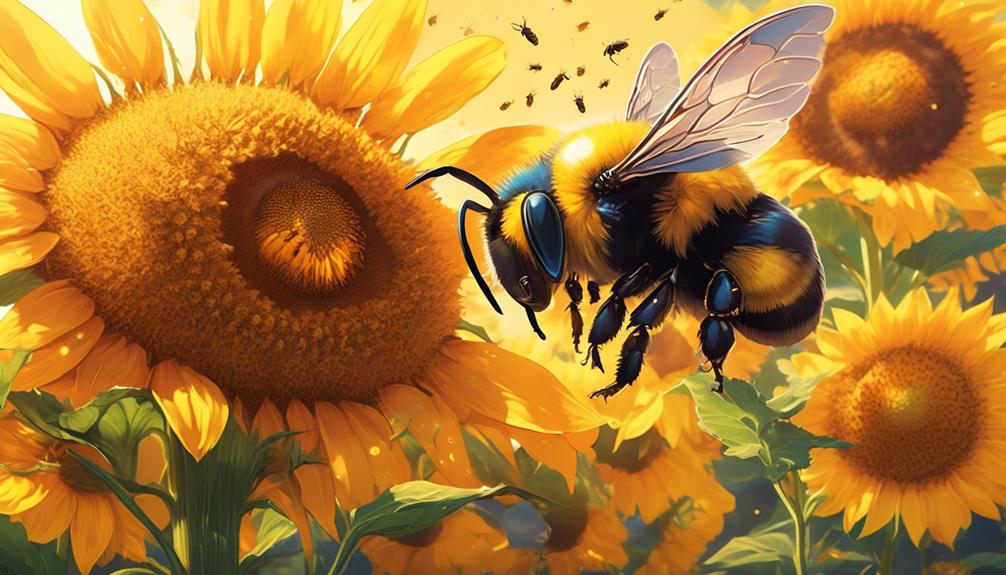
In spite of the wealth of information available, many misconceptions about bees, especially carpenter bees and bumblebees, persist, potentially hindering our understanding and conservation efforts. You might've heard that carpenter bees are harmful to bumblebees, but this isn't entirely accurate.
Carpenter bees are often accused of being parasitic, but they don't directly harm bumblebees. They're solitary bees and don't form colonies, which eliminates the possibility of them outcompeting bumblebees for resources. Carpenter bees do bore holes in wood to lay their eggs, but they don't destroy hives or attack bumblebees.
Another misconception is that all bees produce honey. Bumblebees, for instance, create a small quantity of a honey-like substance for their own use, but they don't produce honey in the quantities that honey bees do. Carpenter bees, on the other hand, don't produce honey at all.
Impact on Bee Populations
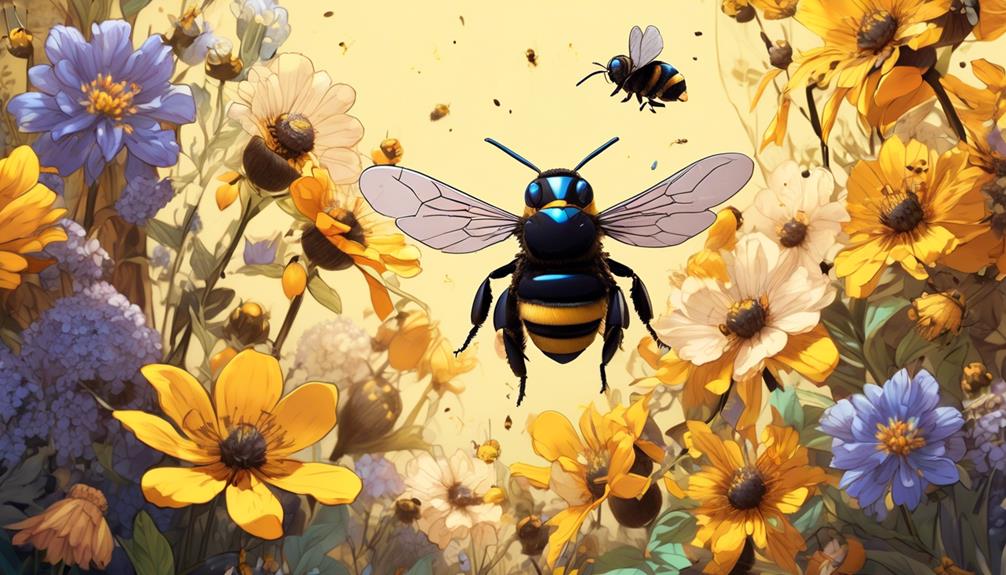
Moving beyond these misconceptions, it's crucial to understand the significant role both carpenter bees and bumblebees play in our ecosystems, particularly regarding their impact on overall bee populations. Both bee species contribute significantly to pollination and biodiversity, and their population dynamics can directly impact our ecosystems and food supply.
Let's delve into the specifics. Carpenter bees, unlike honey bees, are solitary insects. They don't form large colonies and, therefore, don't have the same significant numbers as social bees. However, they supplement pollination efforts, particularly in areas where social bees are less prevalent.
Bumblebees, on the other hand, form small colonies. They are vital pollinators, especially for certain crops and wild plant species. Bumblebees are also known for their 'buzz pollination' technique which is particularly effective for certain plants.
Here's a brief comparison:
Bee Type | Population Structure | Pollination Contribution |
|---|---|---|
Carpenter Bees | Solitary | Supplementary |
Bumblebees | Colonial | Vital |
Conclusion
You've learned that carpenter bees don't kill bumblebees. They're both crucial pollinators having their own unique behaviors, but they don't interact aggressively.
Misconceptions about bee behavior can lead to unnecessary fear and misguided actions. It's important to understand their roles for maintaining balance in our ecosystems.
Remember, every bee species contributes to our environment and their decrease in populations can cause significant ecological disruptions.


